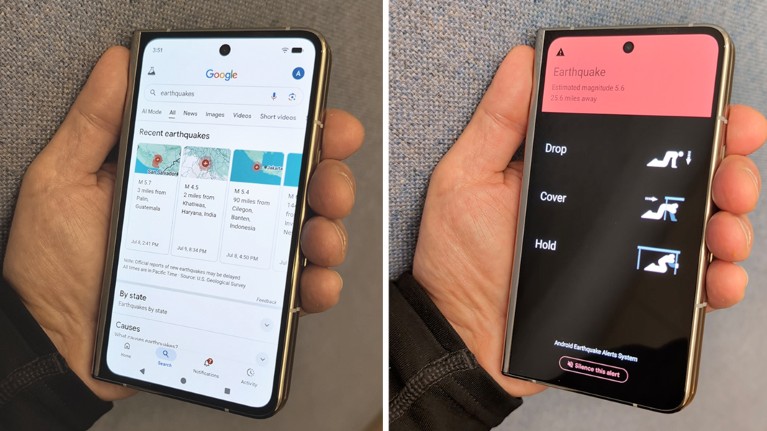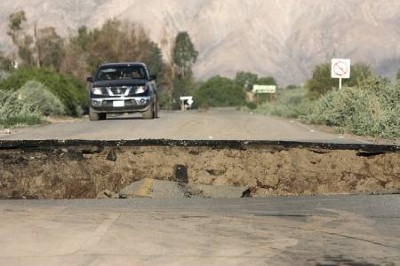Technology giant Google harnessed motion sensors on more than two billion mobile phones between 2021 and 2024 to detect earthquakes, and then sent automated warnings to millions of people in 98 countries. In an analysis of the data, released in Science today1, Google’s scientists say that the technology captured more than 11,000 quakes and performed on par with standard seismometers. Earthquake researchers who were not involved with the experiment are impressed by the system’s performance, but argue that public officials would need access to more information about the proprietary technology before relying on it.
AI predicts how many earthquake aftershocks will strike — and their strength
Over the past few decades, earthquake alert systems using standard seismometers have been deployed in locations including Mexico, Japan and the US west coast. But in 2020, Google announced that it would build a crowd-sourced system to detect tremors at their earliest stages by tracking the collective shaking of Android phones. The results from the first three years of operation, released today, show that the technology works and has improved over time. On average, thousands of people are killed by earthquakes each year, and with the mobile-based alert system in place, the number of people who now have access to earthquake alerts has increased tenfold since 2019, says Google.
“It’s very impressive: most countries don’t have an earthquake early-warning system, and this can help provide that service,” says Allen Husker, a seismologist at the California Institute of Technology in Pasadena. But, Husker says, he would feel better if Google would provide independent scientists with more access to the data and algorithms.

When a large quake hits, Google sends an urgent ‘TakeAction’ message to Android phones.Credit: Google
Scientists at Google say they are being as transparent as they can be about how the system works and performs. Owing to privacy concerns, sharing raw data from users’ phones is a challenge, they told Nature, but the Science paper is designed to shed as much light as possible on how the system works.
“That really is the origin of this paper,” says Richard Allen, a seismologist at the University of California, Berkeley, and visiting faculty member at Google. “I hope the community will recognize that and appreciate that.”
Crowd-sourced detection
The Android Earthquake Alerts system relies on quantity, not quality: research-grade seismometers provide higher quality data, but Google is relying on the ubiquity of modern Android smart phones — which collect and report motion data by default, unless users opt out — to get around a lack of sensitivity in any given device. In addition to mapping out data from individual users to identify earthquake origins and strength, the Google team developed algorithms to analyse the collected signals, which contain regional differences due to geology and building construction, and account for how various phone models register motion.



